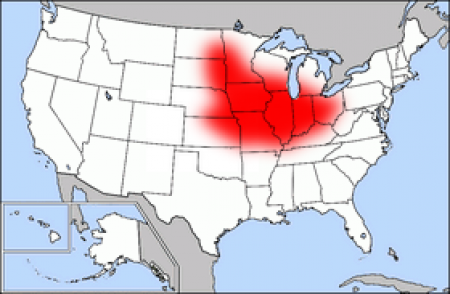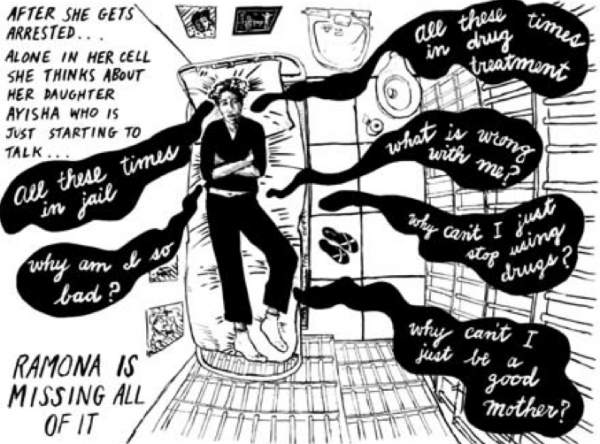Serendip is an independent site partnering with faculty at multiple colleges and universities around the world. Happy exploring!
jo's blog

the desperate scramble for africa
My favorite part of the Shonibare exibit was the piece Scramble for Africa, the one with the big wooden table with men seated all around it. I felt so strongly the emotions felt by all the headless men in the room, the desparation of delegates from different European countries (and America). I could almost empathize with their feelings of need for control of the colonies of Africa. I was reminded of how I felt as a child, dividing up toys between me and my friend, and so strongly wanting my fair share, wanting justice. Except of course that in this situation, justice is impossible, and this debate which feels so real to those men, and to viewers of the piece, fails to make real the millions of people it concerns. So many lives swung in the balance of this argument, and yet those men in power felt none of them, only their own needs. It would be easy to call them greedy, to call all powerful white men greedy, and perhaps many are. But Shonibare's piece gave an interesting perspective, one that in my anger over privilege and oppression it is easy for me to overlook. This doesn't mean that these men (and the countries/societies they represent) can be forgiven for claiming control of lands and people that they had absolutely no right to, but it is helpful for me in thinking about motivations behind oppression.

maybe everyone is right?
As much as I loved bell hooks' way of thinking about home and culture of belonging, it was somewhat comforting to see that people like Morton do not necessarily agree with that view of home/place - and it was also very confusing. For while I haven't experienced a culture of belonging first-hand, I want to believe such a thing is possible, and attainable for me. And at the same time, I am conscious of the very legitimate points made by Martin and Mohanty, who (from what I could gather from their complex language and sentence structures) argue that any community of sameness and comfort inherently shuts out others and makes oppression possible. Which sucks (to put it more bluntly). I can only assume that more oppression (akin to the Ku Klux Klan) is the last thing bell hooks would want, so how can I reconcile both of these ideas? And how does Morton's fit in, his criticism of "fixation on a place"? Maybe all that matters (to me) is how each of these arguments fits into my own understanding of home, place, and community as these things relate to environmentalism/social justice. For example, a community that is actively working to fight oppression might, on the way, exclude some voices, but if they are working hard to be anti-opressive (which, honestly many enviro-justice communities aren't, or think they are but get criticized for not doing enough) and simultaneously trying to end oppression of certain groups of people and/or the environment, maybe that's ok.

impermanent art
http://www.viralnova.com/beach-art/
This is really cool and it reminded me of Ava's art in it's impermanence and its connection to natural mediums/forms.

private post
i just wanted to let everyone know that my web event that was due today is a private post, so you'll have to be logged in to see it.
and since it was a private post, it didn't let me post pictures in it so here are two maps I referred to:


rickety-rackety bridge, #360lyfe
[NOTE: I spent a half an hour trying to resize my desired image so I could change my avatar and, since I'm currently on a windows computer that I don't know how to use, I couldn't figure it out. So I'm posting the image here and I'll work on changing it later tonight.]
For the last 360 I was in, my first interaction with Serendip, this was my avatar picture:
This is a picture of myself being strong and using my voice, and I chose it because I felt it represented myself and my activism and my power. I almost didn't change the picture for this semester, because I like this one so much, but I realized that this no longer represents where I am. I am not the same person I was at the beginning of that semester, because it was such a transformational experience for me. Today in class, with all the discussion about language and reading and words and communication and different understandings, backgrounds and experiences, I was reminded of a metaphor that has stayed with me ever since the end of the Women in Walled Communities 360.

Memo #3
(Sorry it took me a while to figure out how to get this in here as I made it in Word). This is an idea of a chart that I have as a way of thinking about the layerd and overlapping areas of knowledge that exist within our Cannery experience. My memo talks about a lot of what we discussed in class today, and I modified this diagram per Sarah's suggestion, adding another circle for the knowledge that comes with being in prison. The way I've placed the circles suggests that the knowledge we have from outside the Cannery classroom and the knowledge the incarcerated women have do not touch, something that we talked about today and were unsettled about. It makes me think about the quote from Sweeny about the rickety bridge between self and other. As you can see the two are almost overlapping but not quite. Is this accurate to our experience and does it allign with the rickety bridge idea?

Memo #2 Image - Prisoners of a Hard Life
I totally forgot to post my image and caption with my second Memo so here it is now:
I had been thinking a lot about the disconnect between how our incarcerated classmates see themselves as responsible for their positions vs. what we know about the injustices of the Prison Industrial System. In my memo I went back to the Graphic Novel (or whatever you call it), "Prisoners of a Hard Life" and in particular Ramona's story. She feels like she is to blame, like everything is her fault when in reality she is a victim of the system. I want the women we know to understand that, and at the same time I don't want to take away their agency. This is what I was grappling with in my memo.

Research on Nonviolent Direct Action as it Intersects with Race and Class at Bryn Mawr: A Narrative
On Saturday, the Earth Quaker Action Team (EQAT) organized a Day of Action made up of 16 different actions at PNC Banks across 6 sates in the region, part of their campaign agains PNC's investments in companies that practice mountaintop removal coal mining. Bryn Mawr College had a very large role in this event, as the Bryn Mawr Earth Justice League's action was one of the largest with over 25 people attending. In our own little group (EJL) it sometimes feels like we're the only ones on campus doing this kind of activism, that Bryn Mawr as an institution, in its propoganda about fostering desire to make a meaningful contribution to the world, does not inspire in us while we are in college. We get the sense that, for the majority of the campus, academia far outweighs activism in importance, and we can put time into making the world a better place once we've graduated.

A Rich Reading of Eva And Her Men (Web Event #4)
Reading Gayl Jones’ Eva’s Man, it was clear to me that Eva was oppressed, silenced. I saw her as a victim, and felt really bad for her and sad to think how many other women have had similar experiences. Through our class discussion, however, I began to consider that maybe it wasn’t as simple as that. It was couldntthinkofanoriginalname who first brought this to our collective attention in her post, Reflections on Eva’s Man: “all characters… are apart of a cycle of abuse…there is a larger conversation to be had about this book. One that touches upon male's oppression… and internalized sexism…” It was so easy for me at first to write off the men in Eva’s Man as oppressors, representations of the patriarchy at work. I then realized that everyone in this book, just like everyone in the world, is a victim of the patriarchy, and as such is silenced. Throughout the book, Eva chooses silence, as do some many other characters, and I began to wonder how much agency they actually had, if those silences were only chosen due to the way in which society represses and restricts. Thinking about Adrienne Rich’s analysis of silence as lying what role did Eva’s silences play in her abuse and mistreatment and is this something that she or anyone else ever has control over?

Harry Twiggs
I really like Doing Life and find it to be an incredibly moving book. In particular, as I was browsing through it, I was struck by the story of Harry Twiggs, one of the longer sections and very insightful. I was really inspired by Twiggs' story, and how real he was about what he did and how he's dealt with the guilt and consequences. I was also struck by the way his picture parrallels my impression of him as in touch with and at peace with the world. I was also interested by his admitance that part of the reason he was able to turn his life around was because of the system, or at least because of the programs the prison offers. He then went on to say that the root cause of all his struggles was poverty, showing that in fact it is the system that is at fault, but also showing a positive case of reform-type work in prisons.
On an unrelated note, I found it interesting that two different people in the book compared being in prison (for life) to being sucked under by water, having oxygen cut off: Marilyn Dobrolenski (p 89) and Commer Glass (p 103).


